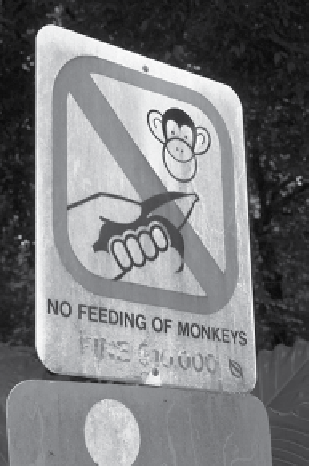Biology Reference
In-Depth Information
Figure 12.6. Signs along the streets and park trails warn guest to parks in
Singapore that feeding macaques is punishable by fines.
for feeding monkeys) to feed the monkeys, and for a while, the monkeys
were nowhere to be seen near the road (
personal observations
) (
Figure
12.6
). The number of troops found along Old Upper Thomson Road has
been reduced from six troops to three due to the lower frequency of food
provisioning by humans, and some troops spend more time foraging in the
forests.
For refuse collection points next to the nature reserves such as BTNR,
the trash is contained in a cage or secured trough until the garbage truck
arrives to take it away. Monkey-proof dustbins have also been deployed
at the visitor centers of nature reserves as well as within the reserves to
prevent monkeys from raiding the bins for food scraps. These bins have
worked well and some residents living near the reserves have also modi-
fied their bins to keep monkeys out. Despite this, many residents still
keep trash bins that are easily opened by macaques, and thus the problem
of trash accessibility is not fully solved. Similarly, fruit trees formerly
planted along the streets in residential areas experiencing monkey nuis-
ance have been replaced by street trees that are less attractive to monkeys
as a food source.


